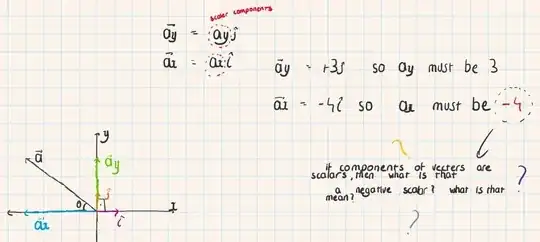$\vec a_{\rm x} = -3\hat i$ can be interpreted in two ways.
$\vec a_{\rm x} = -3\,(+\hat i)$
Here the vector has a magnitude of $3$ - magnitudes are always positive, think of it as the length of the vector when drawn on a piece of paper.
The vector has a component of $-3$ in the $\hat i$ direction - in this case you have chosen a particular direction which is the direction of increasing $x$, $\hat i$, and the vector $\vec a_{\rm x}$ points in the opposite direction to $\hat i$.
$\vec a_{\rm x} = 3\,(-\hat i)=3\,( \hat {i'})$
As before here the vector has a magnitude of $3$.
The vector has a component of $+3$ in the $(-\hat i)$ or $(\hat {i'})$ direction - in this case you have chosen a particular direction which is the direction of decreasing $x$, $-\hat i$ or $(\hat {i'})$, and the vector $\vec a_{\rm x}$ points in the same direction as $(-\hat i)$ or $(\hat {i'})$.
